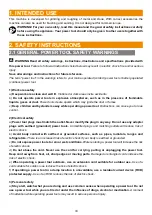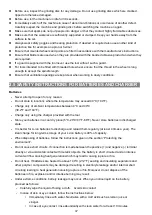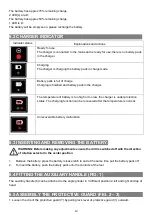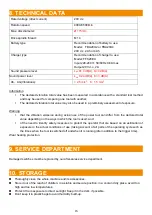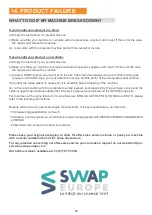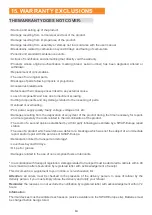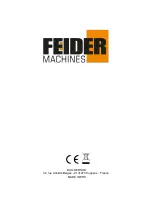
⚫
Before use, inspect the grinding disc for any damage. Do not use grinding discs which are cracked,
ripped or otherwise damaged.
⚫
Before use, let the machine run idle for 30 seconds.
⚫
Immediately switch off the machine in case of abnormal vibrations or occurrence of another defect.
Carefully inspect the machine and grinding disc before switching the machine on again.
⚫
Make sure that sparks do not put people into danger or that they contact highly flammable substances.
⚫
Make sure that the workpiece is sufficiently supported or clamped. Keep your hands away from the
surface to be cut.
⚫
Always wear safety goggles and hearing protection. If desired or required also use another kind of
protection like for example an apron or helmet.
⚫
Ensure that mounted wheels and points are fitted in accordance with the
manufacturer’s instructions.
⚫
Ensure that blotters are used when they are provided with the bonded abrasive product and when they
are required.
⚫
If a guard is supplied with the tool never use the tool without such a guard.
⚫
For tools intended to be fitted with threaded hole wheel, ensure that the thread in the wheel is long
enough to accept the spindle length.
⚫
Ensure that ventilation openings are kept clear when working in dusty conditions.
Batteries
▪
Never attempt to open for any reason.
▪
Do not store in locations where the temperature may exceed 40°C (104°F).
▪
Charge only at ambient temperatures between 4°C and 40°C
(39.2°F and 104°F).
▪
Charge only using the charger provided with the tool.
▪
Store your batteries in a cool dry place (5°C-20°C/41°F-68°F). Never store batteries in discharged
state.
▪
It is better for Li-ion batteries to discharge and reload them regularly (at least 4 times a year). The
ideal charge for long-term storage of your Li-ion battery is 40% of capacity.
▪
When disposing of batteries, follow the instructions given in the section “Protecting the
environment”.
▪
Do not cause short circuits. If connection is made between the positive (+) and negative (-) terminal
directly or via accidental contact with metallic objects, the battery is short circuited and an intense
current will flow causing heat generation which may lead to casing rupture or fire.
▪
Do not heat. If batteries are heated to above 100°C (212°F), sealing and insulating separators and
other polymer components may be damaged resulting in electrolyte leakage and/or internal short
circuiting leading to heat generation causing rupture or file. Moreover do not dispose of the
batteries in fire, explosion and/or intense burning may result.
▪
Under extreme conditions, battery leakage may occur. When you notice liquid on the battery,
proceed as follows:
✓
Carefully wipe the liquid off using a cloth. Avoid skin contact.
✓
In case of skin or eye contact, follow the instructions below:
• Immediately rinse with water. Neutralize with a mild acid such as lemon juice or
vinegar.
• In case of eye contact, rinse abundantly with clean water for at least 10 minutes.
2.
5 SAFETY INSTRUCTIONS FOR BATTERIES AND CHARGER
07



